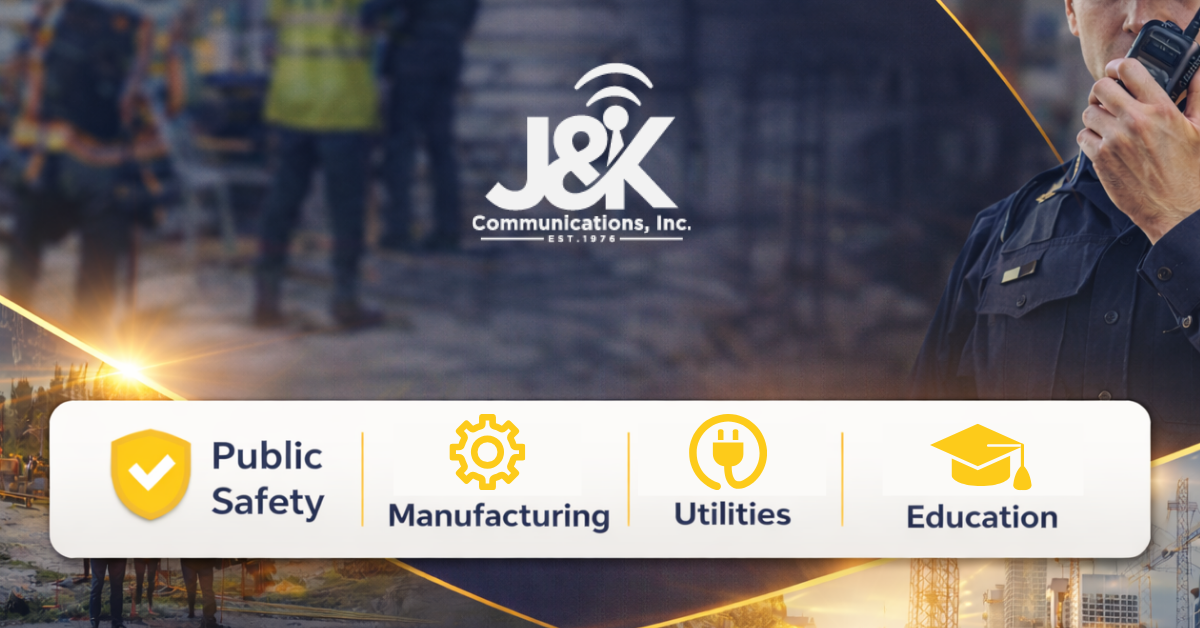Your two-way radio system is mission-critical. Over time, equipment wears, operations change, and requirements evolve. Knowing when to repair, reprogram, or replace protects safety, reliability, and budget — without disrupting daily communications.
Stage 1: Repair
Goal: restore performance quickly and cost-effectively.
- Common fixes: batteries, chargers, antennas, mics/speaker mics, belt clips, housings, knobs, cracked screens, loose connectors.
- Bench service: diagnostics, RF alignment, firmware checks, replacement of worn components.
- Good candidates: radios with otherwise strong performance, recent models with available parts, isolated damage or wear.
When “Repair” Makes Sense
- ✓ Failures are limited to a small number of units
- ✓ Parts and support are readily available
- ✓ Performance returns to spec after service/alignment
Stage 2: Reprogram
Goal: adapt the system to how you operate today.
- Talkgroup/channel planning: add departments, split by shifts, create event channels.
- Security & control: enable/rotate encryption, update IDs, emergency button behavior, priority scan, remote inhibit.
- Coverage optimization: adjust power levels, PL/DPL, roam/scan lists, RSSI thresholds.
- Digital features: activate GPS, text/status messaging, lone worker/man-down, OTAP, logging.
- Policy changes: rename channels, lock critical settings, standardize templates across the fleet.
When “Reprogram” Is the Right Move
- ✓ You’ve restructured teams or added sites/campuses
- ✓ Interoperability with partners/mutual aid is a priority
- ✓ You need stronger security, auditability, and standardized templates
Stage 3: Replace
Goal: eliminate chronic issues and unlock capabilities you can’t achieve with older gear.
- End-of-life (EOL) platforms: parts discontinued, slow/expensive repairs, no firmware updates.
- Coverage limits: persistent dead zones that require repeaters/BDAs/DAS or multi-site solutions.
- Operational gaps: need for encryption, GPS, event logging, or trunking not supported by legacy radios.
- Growth & capacity: one-conversation-per-channel bottlenecks, not enough talkpaths for busy operations.
Smart Replacement Paths
- Phased migrations using dual-mode (analog + digital) subscribers
- Standards-based digital where appropriate: Kenwood NEXEDGE® (NXDN™), DMR, APCO P25
- Site upgrades: repeaters, combiners/duplexers, in-building coverage (DAS/BDA), antennas, battery backup
How to Tell It’s Time to Act
- Frequent static, dropouts, or busy channels during peak operations
- Teams resorting to cell phones or texts as a workaround
- Mixed models/firmware across departments create inconsistent behavior
- Security or compliance requirements now mandate encryption and audit trails
- Repair costs and turnaround times are rising due to EOL parts
Budget & Total Cost of Ownership
- ✓ Repair keeps good radios in service longer and lowers immediate spend
- ✓ Reprogram unlocks capacity, security, and efficiency without new hardware
- ✓ Replace reduces downtime, improves intelligibility, and scales with growth — often the better long-term value
Tip: Many agencies spread costs with phased rollouts and funding windows; J&K can align scope with budget cycles.
J&K’s Lifecycle Approach
We design and support analog and modern digital land-mobile radio systems, tailoring the platform to your coverage, interoperability, security, and budget requirements.
Our Process
- ✓ Site survey & coverage testing — garages, basements, stairwells, production cells
- ✓ Fleet audit — models, firmware, accessories, repair vs. replace mapping
- ✓ Channel/talkgroup design, encryption policies, and templates
- ✓ Migrating to digital with dual-mode radios and phased cutovers
- ✓ Professional installs, programming, training, and 24/7 support
Not sure whether to repair, reprogram, or replace?
Contact J&K Communications for a lifecycle assessment and coverage test.
📞 Call us at (260) 244-7975




